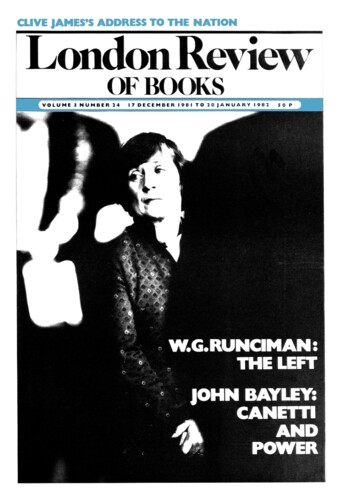Henry and Caroline
W.G. Runciman, 1 April 1983
Anthropological method, as classically practised by Malinowski among the Trobriand Islanders, depends in the first instance on patient scrutiny of the details of the daily life of the community under study. But it depends also on the detection in, or behind, those details of what Malinowski himself called ‘the natives’ Weltanschauung’ – that is, the whole unspoken complex of myths, prejudices, values and assumptions through which they interpret the meaning of the world to themselves. It is not easy to do as well as Malinowski did (and he wasn’t perfect). It depends, not on compiling statistics or transcribing official documents or handing out questionnaires, but on knowing how to identify and dissect the archetypal codes and customs, the revealing turns of speech and manner, and the almost imperceptible nuances of life-style, by which the community defines itself in relation to its environment and its past. Where the anthropologist is working in an exotic and alien culture, the task, however daunting at the outset, is made much less so at the point of publication by the simple fact that the audience to whom the reported findings are addressed has no means of checking them against what the natives themselves might have to say. But where the fieldwork has been done in the anthropologist’s very own milieu for dissemination to, as well as about, the natives themselves, publication is a much more hazardous affair. How can you dare pretend to be telling it like it is if the natives are going to turn round and tell you it isn’t?


